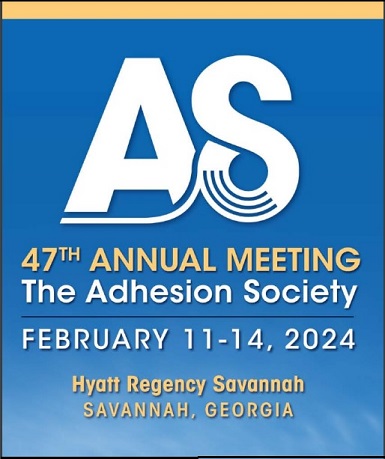Dr. Mark Oliver and Dr. Scott Grindy each offered presentations at the 47th Annual Meeting of the Adhesion Society, which took place February 11-14, 2024 in Savannah, Georgia.
Dr. Oliver spoke about “Modeling Fatigue Debonding of Adhesives in E-Mobility Battery Packs” on Monday morning, February 12, at 11:10 AM. A primary strategy for reducing mass in e-mobility battery packs is to combine thermal, electrical, and mechanical functions into single parts, thus reducing the amount of material needed.
One of the concerns for long-term durability of bonded interfaces in lightweight battery pack structures is fatigue. E-mobility battery packs are subjected to cyclic loading during service that can cause cracks in adhesives to propagate slowly over time, eventually leading to a reduction in thermal control in the pack or ultimately to separation of the cell from the pack.
In this talk, Dr. Oliver shared a computational approach for simulating fatigue debond growth in battery pack adhesives and explain the benefits of doing this type of analysis when developing new adhesives and designing bonded battery pack structures. He also discussed some of the challenges of modeling fatigue debonding accurately.
Dr. Grindy spoke about “Computer Vision-Enhanced Measurement of Adhesive Toughness at Impact Rates” on Tuesday morning, February 13, at 11:25 AM. The high-rate mechanical properties of adhesives and composites are important for numerous industries, including automotive, consumer electronics, and defense. However, measuring the fracture toughness of adhesives under impact loading conditions is difficult. Conventional Mode I tests such as the double cantilever beam (DCB) are not feasible to operate at such high strain rates, and conventional methods for measuring toughness during a DCB test rely on measuring the debond length and applied load, which can cause significant error.
In this talk, Dr. Grindy discussed how high-speed video combined with computer vision techniques allow one to measure the mode I toughness of structural adhesives using an impact wedge DCB test. Veryst uses a J-integral approach to calculate the mode I toughness, which does not require measuring the debond length, leading to more robust calculations of the steady-state toughness. Finally, Dr. Grindy validated our method using synthetic input data derived from a finite element simulation, and investigate practical limitations of the technique. This method can enhance the evaluation of new adhesive formulations for impact applications as well as improve the accuracy of cohesive zone models used to predict adhesive joint failure during impact events.
